Climate Change is Hurting Community and Agricultural Banks


A recent report by a subcommittee of the U.S. Commodity Futures Trading Commission (USCFTC) highlights the financial sector's vulnerability to the impacts of climate change. In addition to the direct impacts relating to assets, regulatory uncertainty due to the lack of a national plan to address climate change makes preparing for disruptions an even bigger challenge. The big national banks will likely be able to adjust to sudden extreme weather events, at least in the near- and medium-term, but one part of the financial system is already reeling: community and agricultural banks.
Impacts to community and agricultural banks
Community and agricultural banks typically serve smaller and more rural communities. They are invested in and of the communities they serve. They do not hold the same level of assets as major national financial institutions and are therefore more vulnerable to major shocks. Every state has community banks, but the top five standouts from a climate perspective are Texas, Illinois, Minnesota, Iowa, Missouri and Kansas. All of these states have suffered significant climate impacts in the past few years. Similarly, agricultural banks, which focus on farmers, are primarily located in and lend to farmers in Midwestern states.
Recent floods are only one of the climate impacts already felt in the Midwest. Droughts and heatwaves put additional stress on farmers. Tornadoes, historically mostly in the center of the Midwest, are starting to move eastward across the region as climate change progresses. The USCFTC report notes these smaller banks are responsible for 30 percent of the nation’s commercial real estate loans. Further they make up about 33 percent of community and agricultural banks’ portfolios, compared with only 5 percent of the larger banks’. Extreme weather events not only destroy homes, farms and businesses, but as they increase in intensity or number, the community and agricultural banks that serve affected communities will be stretched thin.
In a research study done on climate impacts to financial stability by the Federal Reserve Bank of San Francisco, officials noted "there is a real possibility that real estate values in some communities will be decreasing due to increased flood risk” and that “at some point in the next 20 to 30 years, absent substantial new approaches to reducing and managing flood risk, there may be a threat to the availability of the 30-year mortgage in various vulnerable and highly exposed areas.” In other words, community banks will struggle to remain viable alongside the communities they serve.
Improving resilience in community and agricultural banks
Given that the impacts are already felt, these community and agricultural banks can take steps now to mitigate their risk. They, along with the major banking institutions, should undertake thorough climate risk analysis research — including potential impacts of their assets — and implement strategies and policies to prioritize more sustainable lending.
Agricultural banks, in particular, would benefit from incorporating resilience into the value stream. Short-term financial products do not adequately address some measures like extended crop rotations or conservation practices, which could improve the resilience of the farm and the banks.
Community banks could benefit by incorporating more sustainable practices into their lending portfolios, especially investments in energy efficiency and distributed renewable energy systems to increase the community’s resilience.
Community and agricultural banks are a vital component of the financial health of many small and rural communities across the country, especially the middle swathe from Texas to Minnesota. Climate change poses a risk to their viability in the future, and with it, the viability of the communities they serve. The effects of climate change are already being felt; action to mitigate those effects is overdue.
Image credit: Kelly Sikkema/Unsplash
How Every Shopper Can Support Honey Bees During National Honey Month


What’s one essential service that may have gone under your radar during the coronavirus pandemic? How about the work honey bees and their keepers do?
Beekeepers have had their hands full with travel restrictions during statewide stay-at-home orders. So much of agriculture relies on bees traveling from farm to farm to pollinate crops, but with bees in increasingly short supply in the natural environment and beekeepers unable to transport them, some farmers have been left in the lurch. Yet there was some good news for bees this summer. While yearly losses have become a new normal, this year “turned out to be a very good year“ for bee populations, Nathalie Steinhauer, science coordinator for the nonprofit Bee Informed Partnership, told the Associated Press.
Of course, this year’s good news doesn’t diminish the trend of yearly winter losses of 30 or so percent that beekeepers have come to expect in their hives. Some threats contributing to these declines include climate change, habitat fragmentation and loss, and the introduction of invasive species.
With Climate Week coming up on September 21, it’s important to note that climate action is urgent for the humble honey bee. A warming atmosphere induces habitat loss, shifts in flower blooming times and a greater presence of a harmful parasite, among other effects.
Apis mellifera makes more than honey
Honey bees may seem like a pretty obscure subject to deliberate in this moment. After all, there are 20,000 or so species of bees in the world, and only one is Apis mellifera — the common European honey bee. Yet, Apis m. plays a critical role as a pollinator. A 2018 report published by the Royal Society found the Western honey bee to be the most important species of pollinator across global natural habitats. Apis mellifera is a pervasive generalist and a competent pollinator, the report claims.
All this pollinating has a marked impact on our agricultural systems. Honey bees contribute to the production of 90-plus commercially grown crops in North America, which added over $15 billion in revenue for the U.S. economy in 2014. A U.N. report from last year estimated up to $577 billion in annual global crop loss from pollinator degradation.
Taking all these numbers into account, investing research and money toward honey bees seems like a wise idea, benefiting the national economy and countless businesses. One initiative that aims to help is happening during this year’s 32nd annual National Honey Month, first established by the National Honey Board, an industry-funded group that promotes honey. This September, the Board launched the Honey Saves Hives campaign, together with Kashi, Justin’s and Frönen, catalyzing more than $52,000 in donations to promote bee vitality and resilience.
Buying select made-with-honey products this month supports honey bees
Kashi, Justin’s and Frönen have committed to making a donation every time someone buys select products that feature honey. For Kashi, that’s its Organic Honey Toasted Oat Cereal. For Justin’s, it’s Honey Almond Butter. And Frönen will donate for any of its six “sweetened with honey” non-dairy ice cream flavors.
Donations will support organizations including Project Apis m. — the largest nonprofit in the nation funding, researching, and encouraging bee colony health and crop success. The nonprofit has funded 102 scientific research projects since 2006, each one helping to advance understanding of how to care for bees and manage crops. Healthier habitats and bees make for greater resilience against climate change, too.
The organization will dedicate donations to “crucial research around mitigation of bee health threats, habitat and forage restoration, best management practices and more,” Danielle Downey, executive director of Project Apis m., said in a press statement.
Honey Saves Hives gives food manufacturers an opportunity to invest in the future of their products. But it also brings every shopper into the mix. Choosing these honey-made items during the rest of September can make an impact on honey bees and the country’s food landscape. Even beyond this month, buying honey in the grocery store any time of year connects a customer to the National Honey Board’s annual 5 percent allocation of revenue to honey bee health research.
“We know that many people share our concern about the threats to bee health and we wanted to give them a way to help. Honey Saves Hives is an easy way to support honey bees by purchasing several delicious products that are made with honey,” Margaret Lombard, CEO of the National Honey Board, said in a statement.
Image courtesy of the National Honey Board via Porter Novelli
FTSE Russell Launches Data Model to Measure the Global Green Economy
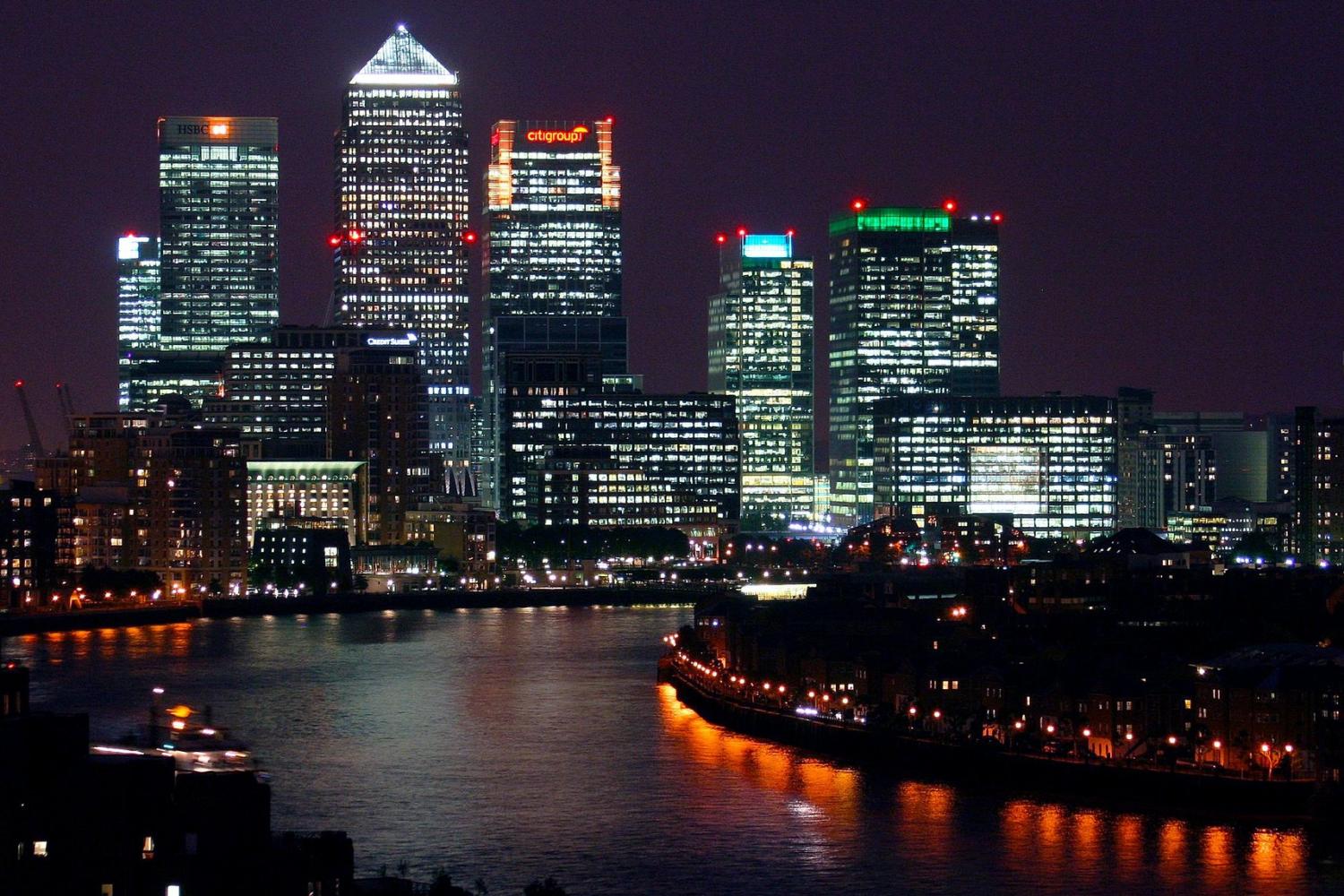

The global markets indexing provider FTSE Russell has rolled out an enhanced Green Revenues 2.0 Data Model, which measures the “green revenue exposure” of more than 16,000 listed companies across 48 developed and emerging markets. This coverage, similar in scope and structure to its Russell 2000 Index, represents 98.5 percent of the total global market value of listed companies.
Designed to support a growing appetite among institutional investors for sustainable investing strategies and a greater application of such tools in the area, this latest development comes as the green economy is estimated to worth approximately $4 trillion, equivalent to around 6 percent of the market capitalization of all global listed companies.
This data model from FTSE Russell is touted as providing investors with a “comprehensive classification system” and covers sustainable products and services in 10 sectors, 64 sub-sectors and 133 micro-sectors.
Specifically, the sectors are as follows: energy generation; energy equipment; energy markets and efficiency; environmental resources; environmental support services; food and agriculture; transportation equipment; transport solutions; waste and pollution control; and water infrastructure and technology.
Originally, the first iteration of the index provider’s green revenues data model was launched back in 2015. It also serves as the underlying data to the London Stock Exchange’s “Green Economy Mark,” a certification that is awarded to London-listed companies that generate over 50 percent of their revenues from green activities.
To date, there are 86 companies listed on the exchange that have gained this mark, which spans the blue-chip FTSE 100 and the Alternative Investment Market (AIM).
With the enhancement to the data model a green tiering system is also applied to determine the net environmental impact based on seven environmental objectives. This recognizes that green revenues come in lighter and darker “shades.”
By using three tiers to rank sources of green revenue by “limited,” “net positive” and “clear and significant,” FTSE Russell’s Green Revenues data is said to support a more lucid understanding of investors’ green exposure.
Further, the data model can be used for a growing number of regulatory reporting needs.
This includes climate performance against the requirements of the Task Force on Climate-related Financial Disclosures (TCFD). This framework, which was created in 2015 by the Financial Stability Board, develops consistent climate-related financial risk disclosures for use by banks, companies and investors in providing information to stakeholders, as well as the European Union (EU) Taxonomy regulation.
With over a decade of green and sustainable revenues data now being available with FTSE Russell dating back to 2008, this standard is held up as enabling investors to monitor and track companies’ progress in achieving sustainable standards as the globe shifts to a more low-carbon economy.
Arne Staal, Global Head of Research and Product Management at FTSE Russell, commenting in the wake of the launch, said: “FTSE Russell’s enhanced Green Revenues 2.0 Data Model is a powerful tool that investors can use to quantify a company’s contribution to the green economy in a single percentage of revenue figure.”
Staal, who was formerly a BlackRock product research head, added: “A high degree of overlap with the incoming EU Taxonomy will also allow asset managers to demonstrate the proportion of a fund that contributes to the growing and dynamic green economy. Furthermore, investors need access to high quality, comparable and relevant underlying data, available at scale, to support their sustainable investing strategies.”
In addition, Staal explained that the organization’s green revenues datasets are being used in a multitude of ways including in the FTSE TPI Climate Transition Index, which provides increased exposure to the opportunities arising from the global green economy across 10 various sectors.
Products within the FTSE Russell portfolio are used extensively by institutional and retail investors globally and currently around $16 trillion in assets are benchmarked to FTSE Russell indexes.
Image credit: PxHere
Wrangler Pushes for a More Circular Cotton Supply Chain
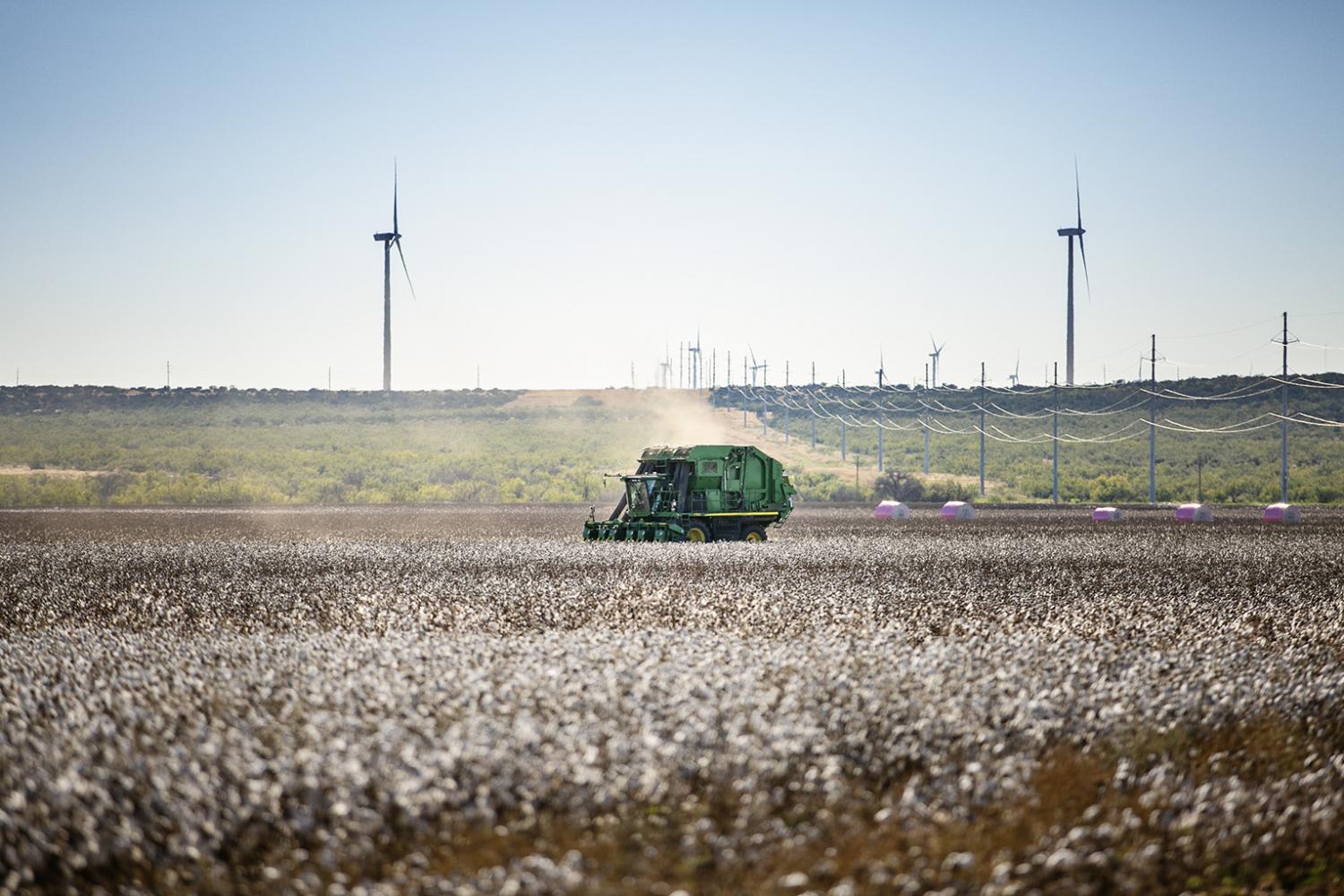

As the fashion industry, and fast fashion companies in particular, come increasingly under scrutiny, many retailers and clothing manufacturers are looking at their sourcing and supply chains to ensure sustainability from the first mile to the customer purchase. Wrangler is one such retailer; the brand recently announced a global call to action for cotton farmers who can demonstrate and document soil health and biodiversity improvements to apply in order to partner with it on the launch of a new jean.
This new Wrangler jean is a part of The Jeans Redesign, an initiative spearheaded by The Ellen MacArthur Foundation (EMF). This initiative established guidelines on the minimum requirements for durability, material health, recyclability, and traceability of denim jeans, with over 40 denim experts providing insight. To date, over 50 notable brands, manufacturers, and fabric mills have signed on to this initiative and are using these guidelines to produce new jeans for purchase this fall.
In addition to joining up with The Jeans Redesign, Wrangler has added a new dimension of circularity to its stated commitment to source 100 percent sustainably grown cotton by 2025. The brand will do so by joining the EMF’s Make Fashion Circular Initiative, which exists to drive collaboration between apparel industry leaders to ensure that clothes are made from safe, renewable materials, that new business models increase their use, and that old clothes are turned into new.
“A circular economy is symbiotic with regenerative agricultural practices,” Roian Atwood, Senior Director, Global Sustainable Business at Wrangler, said in an emailed statement to TriplePundit. “Wrangler is amplifying our commitment with this call to action as we work with farmers to rapidly scale the supply of sustainably-grown cotton. For this project, we’re looking for the best of the best.”
Wrangler’s new commitments here fall in line with its stated values — to explore new ways to care for the land that feeds and clothes people, the brand’s partners and workers across its supply chain, and finally, people around the world.
These new commitments are also not the first step Wrangler says it has taken to build a more resilient, regenerative cotton supply. In 2017, Wrangler introduced the Wrangler Science and Conservation Program, a coalition of industry experts, farmers, and non-profit partners who sponsor research and education on soil health farming practices. When implemented, these methods have been shown to increase yield, reduce water and energy burden, fight erosion, and reintroduce more carbon into the soil.
“Over the last 100-150 years, many of our most productive agricultural soils have lost 40-60 percent of their precious organic carbon back into the atmosphere,” Wayne Honeycutt, President and CEO of the Soil Health Institute, said. “Restoring carbon back into the soil with regenerative agriculture is one of the greatest opportunities we have to address both climate change and the financial well-being of farmers. We hope more brands will follow Wrangler’s lead and produce climate beneficial clothing.”
Farmers looking to participate in Wrangler’s “Regenerative Jean” collection are being asked to submit evidence of improvements to soil health and the resulting environmental benefits of adopting regenerative agricultural systems. The Soil Health Institute is chairing an external panel to review partner submissions, looking at benchmarks like improvements in soil carbon, soil physical properties, biological properties and ancillary benefits to the environment.
Image credit: Wrangler
U.S. Net Zero Goal in Sight, Thanks Partly to Corporate Climate Action
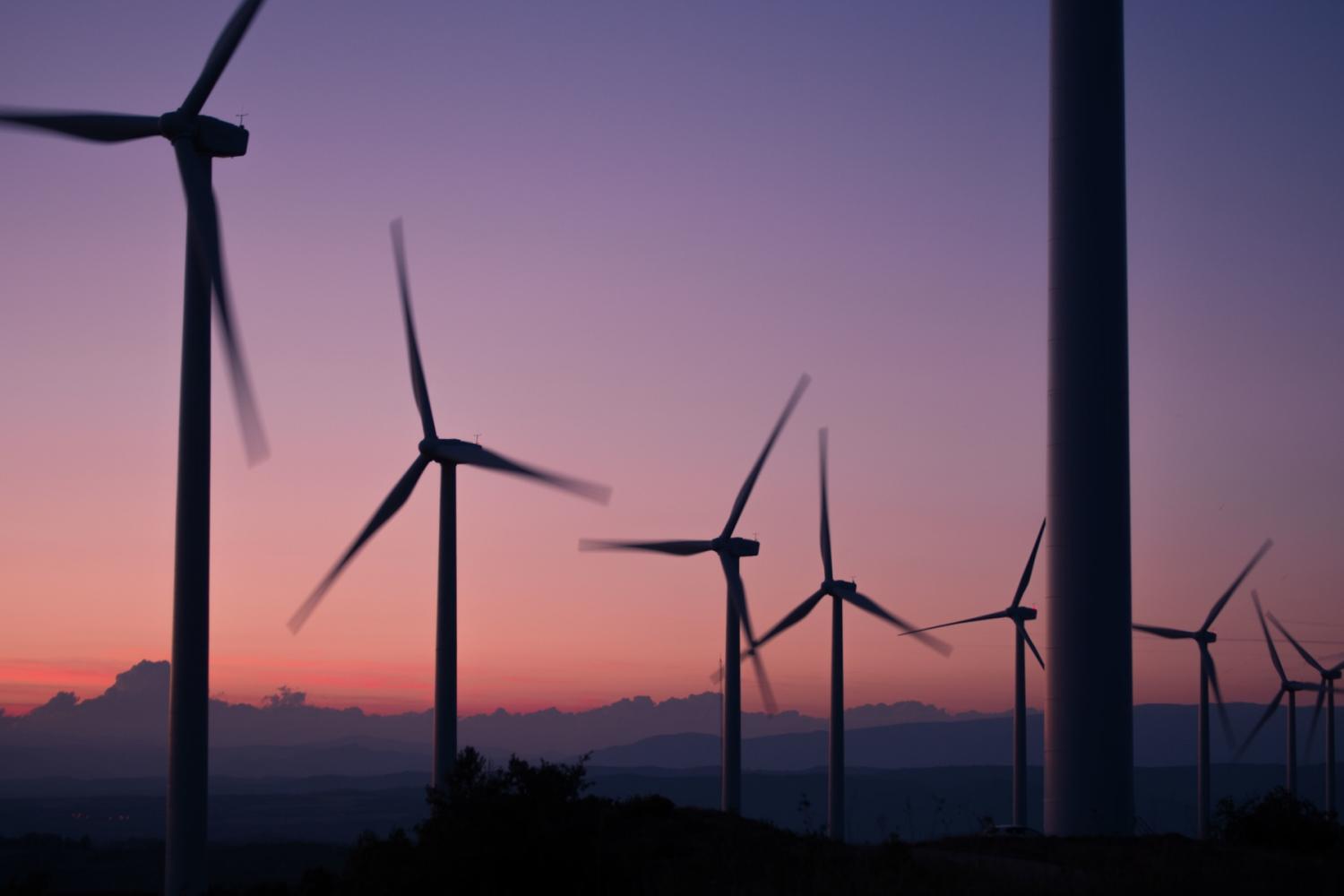
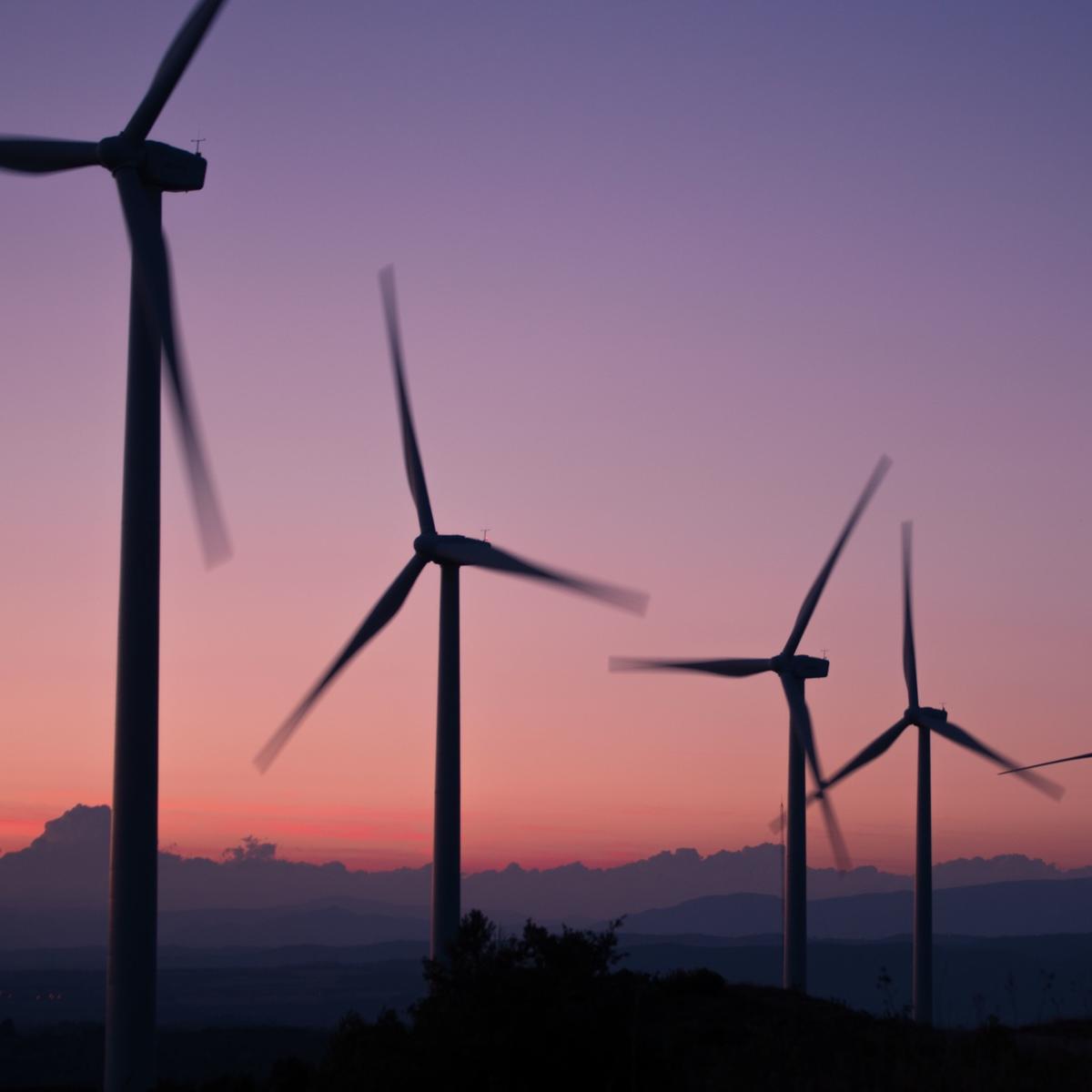
Back in 2015, leading U.S. corporations stepped up in support of President Barack Obama to invest in renewable energy as part of an organized effort leading to the signing of the Paris Agreement on climate change. Two years later, the Trump administration struck a blow to climate action as it announced its intention to pull the U.S. out of the Agreement.
Nevertheless, a new report indicates that corporate climate activism has already helped to counterbalance the setback in national policy, leading to improved prospects for reducing the risk of catastrophic climate change regardless of who occupies 1600 Pennsylvania Avenue.
Paris Agreement or not, the U.S. economy is decarbonizing
The new climate action report comes from the organization America’s Pledge, in partnership with the We Are Still In coalition. Both organizations launched shortly after the Trump administration announced its intention to pull out of the Paris Agreement in July of 2017.
The two organizations have enlisted state and local governments, nonprofits, academic institutions and business leaders in a combined effort to achieve the Paris Agreement goals for reducing carbon emissions and limiting global warming.
In a December 2019 report, America’s Pledge calculated that this “bottom-up” approach could keep the U.S. on track to achieve its Paris Agreement commitment of up to 37 percent by 2030, even without a strong federal policy framework to support it.
However, the need for more urgent climate action has become fully apparent within the past several weeks, with hurricanes battering the Gulf coast and record-setting forest fires besieging the west coast.
The most recent America’s Pledge report provides some much-needed hope for success. Issued on Monday, the new report reaffirms that the action of non-federal entities has been successful in counterbalancing the “climate denial and obstruction from the White House.”
Adding a dose of reality to the optimism, the report comes with a caveat. It projects that the progress so far will enable the U.S. to achieve net zero emissions by 2050, as long as it is supported by strong federal policies.
The post-Trump road to climate action
That is quite a caveat, considering President Trump’s track record on climate action.
Somewhat ironically, President Trump doubled down on his anti-science approach to climate action just one day after America’s Pledge issued its new report during a trip to California. While holding a public discussion on the forest fire situation, he insisted that that the Earth will cool down, presumably on its own.
America’s Pledge and its members are not betting on that to happen.
The new report, titled We Are Still In to Deliver on America’s Pledge: A Retrospective, describes how the U.S. has reached an “irreversible tipping point in its clean energy transition, due to unprecedented, bold actions from U.S. state and local leaders, a pivotal shift in market forces, and overwhelming public demand,” all taking place despite the challenges posed by the COVID-19 outbreak and economic downturn.
As evidence of progress during the Trump administration, the report notes that 33 percent of Americans live in a jurisdiction committed to 100 percent renewable energy. Just three years ago, only one state - Hawaii - and 33 cities had made such a commitment.
As for supportive federal policies, that depends on the results of the November 3 election. If there is a change of administrations, the report provides a roadmap for achieving a green COVID-19 recovery that includes “grid modernization, electric transit, zero-emissions buildings, end-of-life refrigerant disposal, and support for low-income and impacted communities.”
Google raises the bar on climate action
On the downside, the report emphasizes that the urgency of climate action has outrun the ability of non-federal entities to act in time to avert catastrophic impacts.
“Despite positive momentum and market signals, a massive, coordinated effort from both the federal government and non-federal entities is still needed to deploy clean solutions at the speed and scale necessary to achieve the targets that scientists have warned are necessary to avoid some of the worst impacts of climate change,” the report states.
Nevertheless, some business leaders are determined to demonstrate that the private sector has the resources and know-how to make significant progress, by aiming beyond its own operations with a more holistic, carbon-negative approach.
Google became the latest company in the negative-carbon category on Monday, when CEO Sundar Pichai announced that the company will follow up on its track record of leadership on carbon neutrality and renewable energy by working toward “a carbon-free future for everyone.”
Pichai outlined four steps, including the immediate elimination of the company’s “carbon legacy” by purchasing carbon offsets.
“This means that Google's lifetime net carbon footprint is now zero. We’re pleased to be the first major company to get this done, today,” Pichai wrote, strongly implying that any other major corporation could easily take similar action today, if it so chose.
Another part of the plan is somewhat more complicated but is also doable with today’s technology. Instead of simply matching its annual electricity demand with renewable energy purchases, Google has set a goal of operating solely on renewables, globally and on a 24/7 basis, by 2030.
In laying out this step, Pichai also made the case for corporations to compete for customers and clients by meeting their expectations for clean power.
“Our data centers power the products and services you’ve come to rely on every day. This will mean every email you send through Gmail, every question you ask Google Search, every YouTube video you watch, and every route you take using Google Maps, is supplied by clean energy every hour of every day,” he wrote.
Pressure builds on Amazon to act
Pichai did appear to caution that “the right government policies” would need to be in place for Google to realize its 24/7-by-2030 goal.
However, he also indicated that Google would be deploying its buying power to prod policy makers in the right direction.
As described by Pichai, Google is planning to shepherd in 5 gigawatts worth of new clean power capacity in its key manufacturing regions by 2030, which the company anticipates will generate more than 8,000 clean energy jobs.
Google also plans to help a group of 500 cities reduce their carbon emissions by a total of 1 gigaton annually. As part of that effort, the company will expand its Environmental Insights Explorer carbon tracking tool from 100 participating cities to 3,000.
There is much more to the Google plan, and the upshot is that it puts tremendous pressure on other tech companies to leverage their existing resources and knowledge base in the service of urgent, holistic climate action.
In particular, Amazon should be feeling the heat for its continued support of the oil and gas industry through its Amazon Web Services branch, and for its reported attempts to tamp down on employees who criticize its climate policies.
The ripple effect could also have an impact on Facebook. The company has come under fire for enabling the dissemination of conspiracy theories related to climate change denialism while preventing legitimate climate scientists from sharing their research.
As Google has demonstrated, U.S. tech companies have the power to make a significant contribution to climate action without waiting around for the results of the November 3 election to roll in. All that is lacking is will power.
Sign up for the weekly Brands Taking Stands newsletter, which arrives in your inbox every Wednesday.
Image credit: PxHere
Science Based Targets Initiative Sets Foundation for Corporate Net-Zero GHG Targets
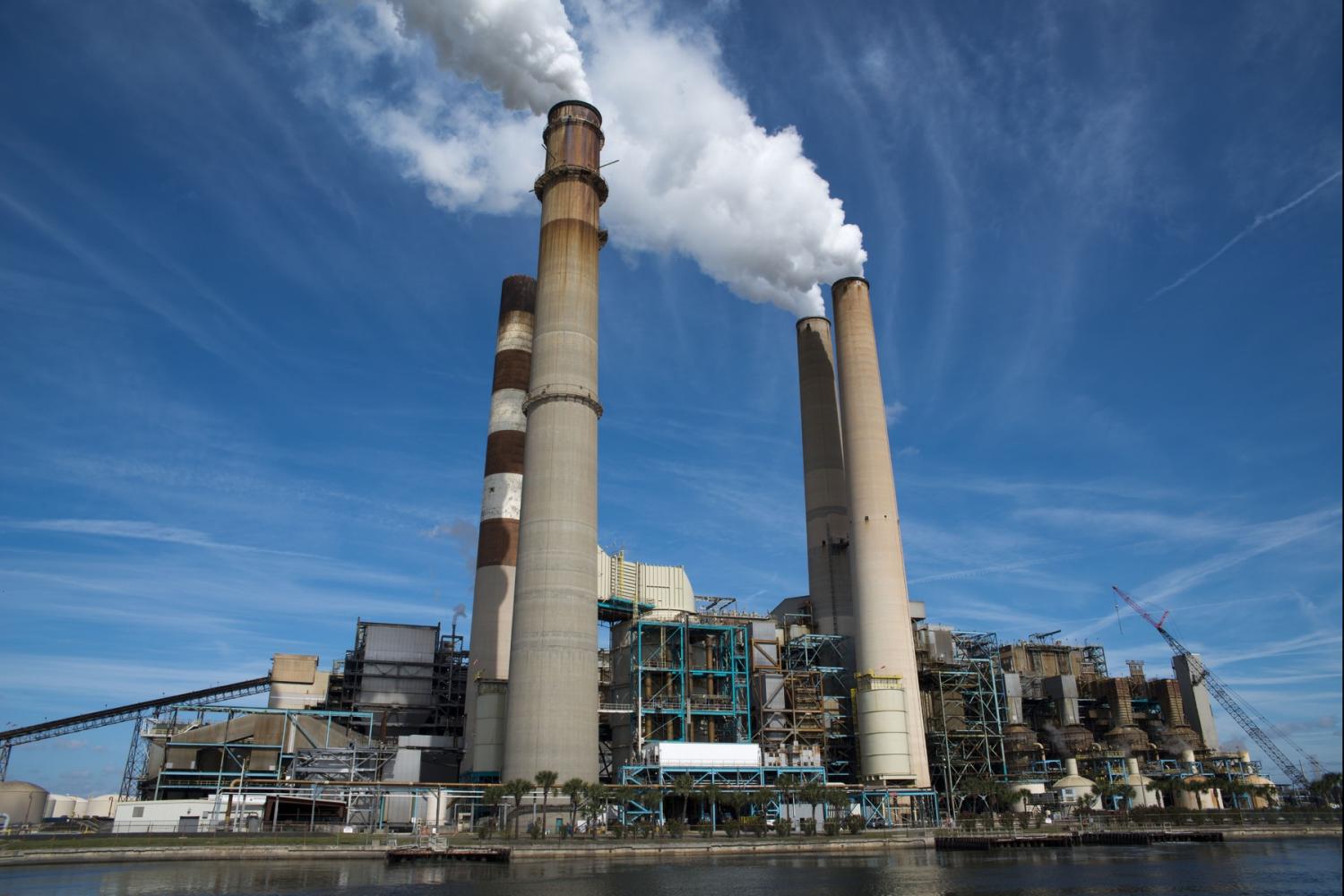
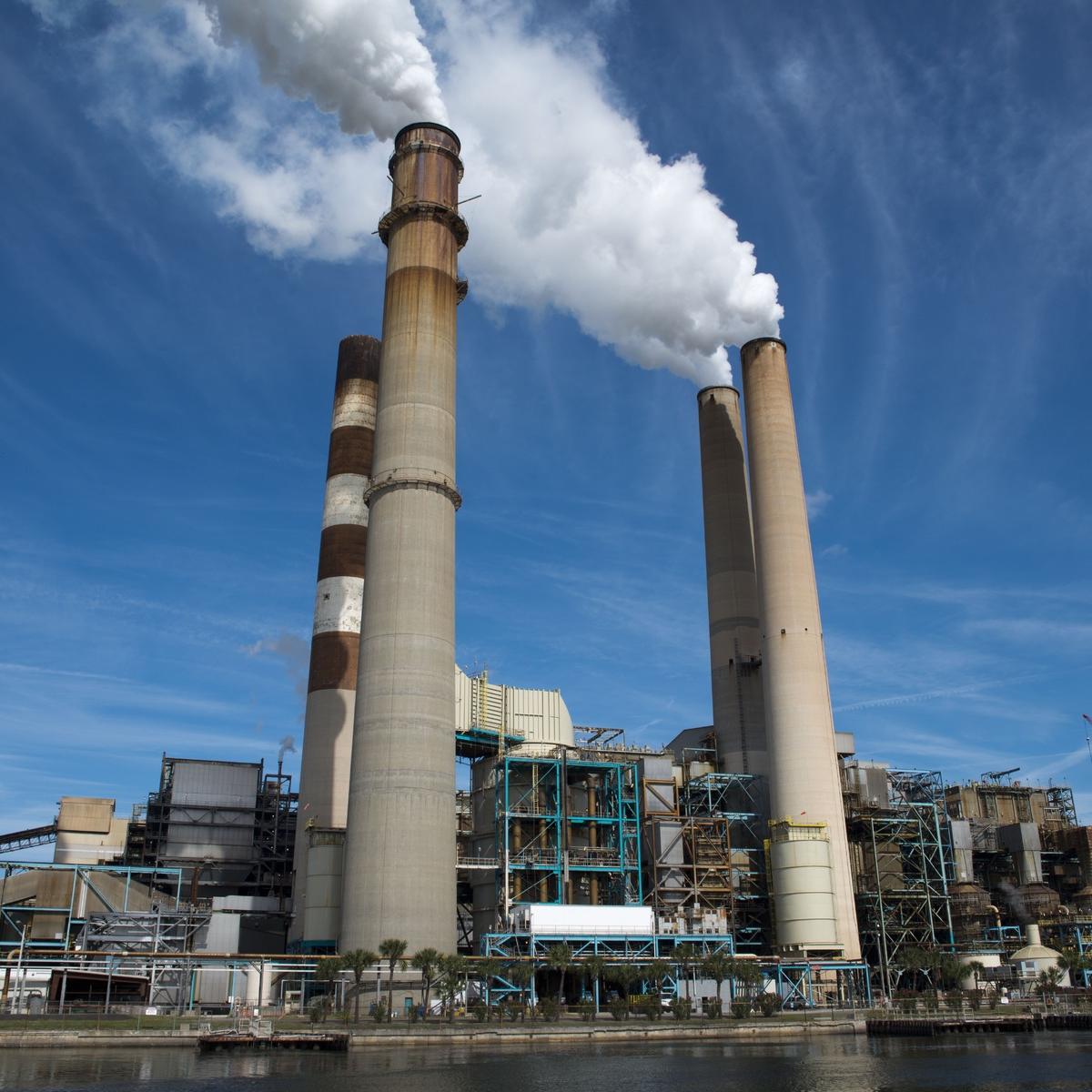
Photo: A power plant in Florida. Today, the Science Based Targets initiative launched a new report laying out the foundation for credible, science-based net-zero targets for the corporate sector.
Pledges to zero out greenhouse gas emissions are fast emerging as the corporate climate commitment du jour. But how can consumers, investors and other stakeholders be sure a company’s net-zero target translates into meaningful action?
Some companies claim net-zero emissions based on the purchase of carbon offsets, for example, but does this really move the needle on climate change? And what types of emissions need to be eliminated in order to qualify a company as net-zero, only their operational emissions or also those from their supply chains?
The Science-Based Targets initiative (SBTi) is looking to provide some answers for companies and their stakeholders. Launched in 2015, SBTi is a partnership between CDP, the U.N. Global Compact, the World Resources Institute (WRI) and WWF. As its name implies, the coalition pushes companies to adopt GHG targets that are “science-based” — in other words, they go beyond what seems attainable for a company and align with what science tells us is required to mitigate the worst impacts of climate change.
After five years of certifying corporate goals based on available science, this week the SBTi kickstarted a process to develop what it calls the “first science-based global standard” specifically for net-zero targets.
A paper released on Tuesday outlines the basic foundation for net-zero targets that align with the global push to achieve net-zero global emissions by 2050, as outlined in the 2015 Paris climate agreement. The report clears up some basic questions, such as what kind of emissions should be included in net-zero targets and what exactly it means to zero out a company’s emissions.
Business ambition meets climate science
The Paris climate agreement calls on governments, businesses and civil society to cap global temperature rise at “well below” 2 degrees Celsius, which climate scientists agree is key to prevent the most disastrous effects of climate change. In order to achieve this, GHG emissions must be cut in half by 2030 and ultimately reach net-zero by 2050.
The SBTi certifies corporate climate goals if they align with this trajectory. To date, more than 970 companies have committed to set science-based targets and 460 have targets validated by the initiative.
Further, the SBTi’s Business Ambition for 1.5C campaign targets global companies to commit and set GHG reduction targets that align with climate science, with 279 companies signing on so far. This campaign defines a company’s success by its reduction of GHG emissions in value chain activities or by compensating for any contributions through direct carbon-removal tactics such as reforestation or soil carbon sequestration, rather than solely through the purchase of offsets.
According to SBTi’s most recent report, more than 300 billion tons of GHG emissions have been incurred by human activity in the past decade. It’s clear that to stop this number from increasing and to achieve the goals of this campaign, there needs to be accountability from global companies — and accountability is possible with a universal foundation.
In order for net-zero targets to be science-based, they must meet two requirements, according to SBTi: Targets must first meet decarbonization requirements which prevent global temperature from rising above 2 degrees Celsius, and any GHG emissions that cannot be omitted must be balanced with the equivalent removal of atmospheric carbon dioxide or carbon-removal tactics.
This SBTi report undertakes the current issue of corporate targets not being easily calculable. Its criteria cover three areas. Targets must include boundary (whether targets cover areas: geographical, operation, etc.), timeframe (establishing short and long-term targets) and mitigation (neutralizing, compensating emissions, etc.).
The road toward global, science based targets standards for net-zero emissions
Still, it can be difficult to quantify the impact of some corporate climate targets. With its framework, SBTI aims to provide clarity to stakeholders and help companies align with climate science. Primarily, all net-zero targets should include three criteria, according to SBTi: a boundary, either geographically or with respect to departments within the company; a timeframe that establishes both short- and long-term targets, and plans to mitigate emissions, either through neutralization or direct compensation.
Reducing value chain emissions is a key priority for the coalition. In other words: It’s not enough for a company to make its operations more efficient or switch to renewable energy — it must also account for (and mitigate) the emissions created by suppliers and customers. And offsetting is not the only solution, SBTi insists. To that end, science-based criteria sets a foundation for the business sector to follow. With the goal of standardizing these processes, we can collect data, hold leaders accountable to their commitments, and translate company visions into tangible plans of action.
To do this, the partners driving SBTi insist business leaders must hone in on their operations and supply chains and implement changes from the inside out. Companies must not only balance climate change objectives and profit, but also scrutinize their partnerships and value chains. The SBTi will continue to engage with partners to translate this initial criteria into a global standard.
Image credit: PxHere
10 Ways 2020 Has Transformed Business Leadership


Next month, 3BL Forum: Brands Taking Stands – Business Elects to Lead will continue its tradition of convening top brands and business leadership to engage in authentic and meaningful conversations. The event is virtual, and runs from noon to 1:45pm ET on October 8, 15 and 22. Register for free here.
Here at TriplePundit, we’ve seen plenty of examples of business leadership during this era marked by the global pandemic, protests for full racial equality, and the concurrent economic chaos. Some episodes we’ve witnessed have left our jaws dropping in disbelief, and not in a good way. But there have been remarkable examples of corporate leaders standing tall, and we need more of them at a time when government is falling short.
Looking back in the rearview mirror over the past six months, we’ve decided to share some examples of how companies, and their leaders, have shined during a year we would like to – but probably won’t – ever forget.
Executives should lead by example and share the pain
One of the more disturbing outcomes of this pandemic is the continued transfer of wealth to the world’s richest few, but there have been some exceptions. The CEOs who took some form of a pay cut when this pandemic first hit include former Disney chief Bob Iger, Ed Stack of Dick’s Sporting Goods and Tom Baylor of Columbia.
Companies can transform their business models faster than we thought
During the first several weeks of this pandemic, everyone was in crisis mode, as there didn’t seem to be enough soap, sanitizer and ventilators to meet demand. But many companies, from local distilleries to automakers, not only scrambled to retool their operations and supply chains to adjust to this new reality, they often did so, successfully.
Businesses must not only articulate their purpose, but follow through, as their stakeholders are watching
We’re living in a much different world than we were 12 months ago, and in a recent survey that the Harris Poll and Just Capital completed, 90 percent of Americans agreed with the sentiment that it’s important for large companies to support an economy that serves all people. But a year after the Business Roundtable issued its much-lauded letter that redefined the purpose of a corporation, many citizens also believe companies and business leadership could do far more.
Standing up for voting rights is no longer a niche cause
During the 2018 midterm elections, some companies stepped up, yet they were the usual politically active suspects, such as Patagonia. Not this year. Groups such as Business For America are galvanizing companies to ensure all citizens have the right to vote, and they are approaching this challenge from a nonpartisan perspective.
A shift in how companies are making and marketing their products
It’s not just about responding to new, strange world of COVID-19. The protests that have launched in the wake of the murder of Black Americans including George Floyd and Breonna Taylor have in part forced companies to look at how they pitch their products. Several global CPG companies, for example, are removing terms such as “whitening,” “fairness” and “lightening” from its skin care products’ labels.
Business leadership includes knowing, talking about and not dodging these massive problems
Earlier this month, as Americans continued to grapple with the shooting of Jacob Blake, the NFL’s Philadelphia Eagles owner, chairman and CEO Jeffrey Lurie did something that every CEO in the U.S. is capable of doing. In a wide-ranging public “State of the Eagles” speech, he argued that Black people in America have been dealing with a lethal pandemic not only during the COVID-19 outbreak this year, but during a 400-year history of oppression, from the state-sanctioned slavery of earlier days to the structural racism of today. The bottom line is that it’s not enough to stand with Black Americans: people are watching what business leaders are saying about racial inequity in America and understand why it’s so persistent.
Ben and Jerry’s stand on Black Lives Matter, made earlier this summer, is another example of business leadership that’s needed as companies remove the filter and become less afraid to speak the truth.
We need businesses leadership even more as governments fail to act
The jumble of inconsistent state-based policies and contradictory messages from the U.S. president, as well as state and local officials, have exposed frontline workers to both verbal and physical abuse. But over the summer, leading retailers have taken matters into their own hands, and that seemed to nudge the president into softening his stand against masks (for a while), at least. One fabric store chain upped the ante by stating that the company is willing to lose customers over its stand on public health.
Companies abandon their core values at their own risk
Before this pandemic, it became trendy to take on a variety of causes, from basic employee engagement to from hiring the formerly incarcerated. One company that has not shied away from inclusive hiring despite the ongoing crises is Greyston Bakery, which has long been churning out brownies in Yonkers, New York, and includes Ben & Jerry’s amongst its customers. “If anything, when looking at the current environment, what we’re now seeing makes it more important that we find solutions to build a more inclusive economy,” Joseph Kenner, CEO of Greyston, told 3p earlier this summer.
Not a transformation, but an affirmation: long-term planning absolutely matters
While the scope and scale of the COVID-19 pandemic is unlike any we've seen before, the global technology firm Intel was perhaps more prepared than most, thanks to a forward-thinking decision made nearly 20 years ago and additional investments that have continued to this day. "We work with such large global supply chains, so we've connected with our suppliers from the beginning to help them protect their employees and also make sure that we could help when they needed support," said Suzanne Fallender, Intel's director of corporate responsibility, during an event earlier this year.
Giving customers a break presents a long-term boost in brand reputation
We know countless industries and businesses were harshly affected by this pandemic. But some sectors, such as the insurance sector, was in a position to offer their customers a lift. In April, Allstate announced it would dole out more than $600 million in refunds, across 18 million policy holders. Other insurers, like AAA, quickly followed suit.
Remember to register for next month’s virtual 3BL Forum so you don’t miss out on these conversations about business leadership, and be sure to sign up for the weekly Brands Taking Stands newsletter if you haven’t already.
Image credit: Bruce Emmerling/Pixabay
Philanthropy, Race and Overcoming Lack of Access to Networks
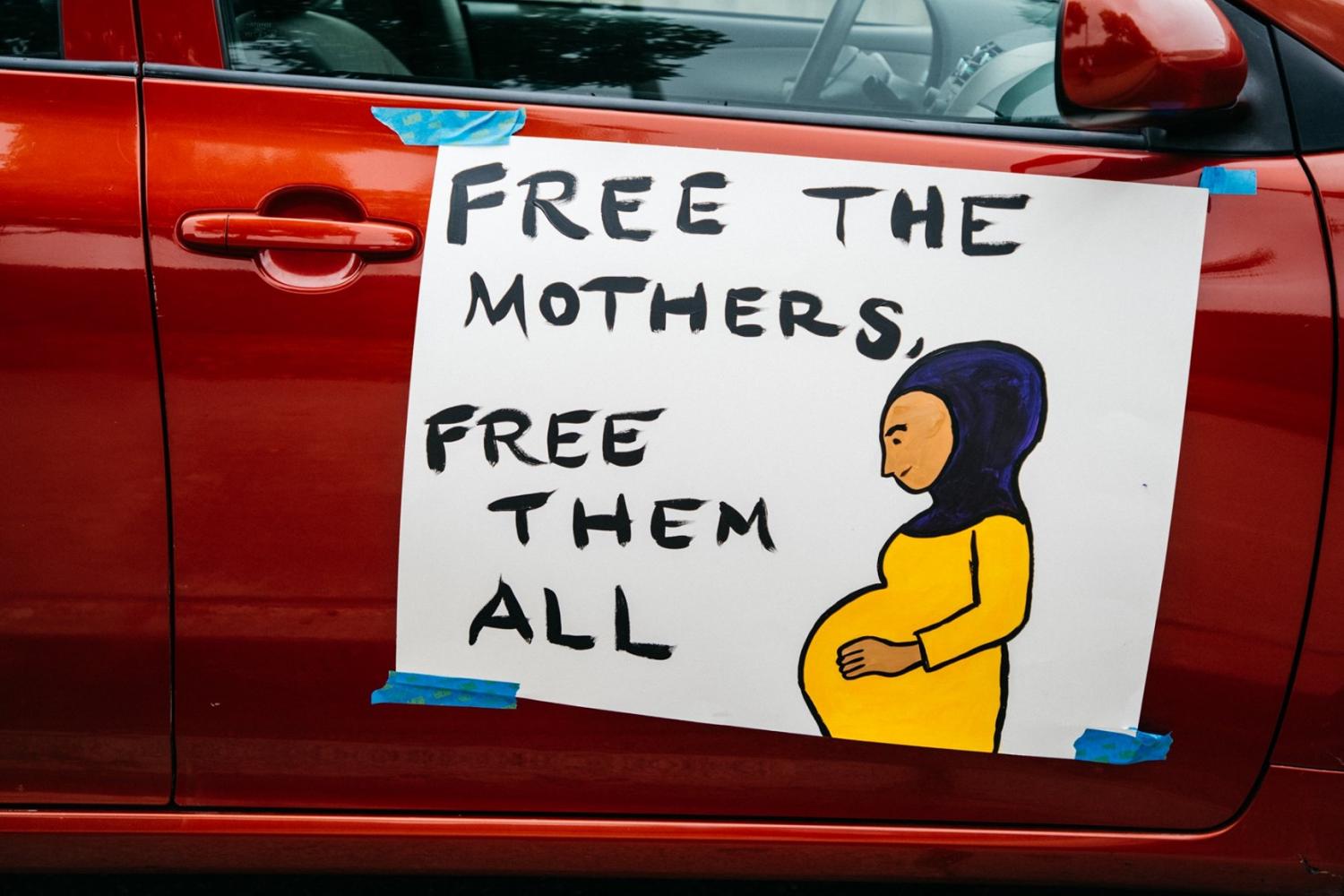

As discussed yesterday, the world of philanthropy wields powerful influence, but that generosity often leaves out people of color. Two of the biggest factors holding back philanthropy’s quest for social change are rooted in race, according to recent research from Echoing Green and The Bridgespan Group. One is understanding the role of race in the problems that philanthropists are trying to solve. The second is the significance of race when it comes to how philanthropists identify leaders and find solutions.
“We found a clear barrier is getting connected—that leaders of color need equitable access to social networks that enable these vital connections to the philanthropic community,” said Echoing Green President Cheryl Dorsey in a recent interview with TriplePundit.
“This came up time and time again in our conversations with leaders. A leader of color is invited to a conference, for example—I’ve experienced this myself—and at the end of the conference, you find out there was a meeting within the meeting,” Dorsey added. “A small group of funders invited a small group of nonprofit leaders to meet at the hotel bar or to go out to dinner, and the leader of color just didn't have access to that invitation or that conversation, which was directly correlated with their inability to build these relationships that lead to funding.”
When evidence-based philanthropy is “weaponized”
Another barrier people of color face in the philanthropy community is the difficulty in building rapport with funders. “Even if you can get connected to these funders, there are all sorts of ways that interpersonal bias can show up and inhibit the ability to build trusting relationships between a funder and a leader of color,” Dorsey said.
“Yet another barrier is the getting across the finish line and getting that funder to write the check. Funders will often lack understanding of culturally relevant approaches that proximate leaders of color bring to the table,” continued Dorsey. “Leaders of color will often hear, ‘I would really like to fund solutions generated by communities of color, but there's just not enough evidence of effectiveness, or it's just not clear they have the capacity to execute on the work’. And it's a vicious cycle of disadvantage. Because quite often, leaders of color don't have organizational capacity because funders don't invest in them.”
As Dorsey noted, “Evidence-based philanthropy can be weaponized to exclude leaders of color who are often nearest to the issues that their communities face and are really rolling up their sleeves to do deep, complicated, complex social change work that doesn't necessarily lend itself to easily measurable variables. How do you dismantle 350 years of structural racism around wealth and credit? There's not going to be one metric that you can easily use to measure that organization against. It’s much more complicated and nuanced and sophisticated than that.”
Three steps for funders to remedy the barriers
The research by Echoing Green and Bridgespan recommended three steps, or three “gets,” for donors to remedy these barriers:
Get proximate: Actively build knowledge of, connection to, and mutual trust with communities most impacted by the social change issues you seek to address, through intentional learning and investment.
Get reflective: Collect, analyze and reflect on data disaggregated by race for your portfolio in order to unearth and assess assumptions and biases that are limiting your philanthropy. Then make necessary shifts to your organizational culture, process, and investment norms.
Get accountable: Set racial equity goals to build power among community members and leaders proximate to the problems you seek to address. Share these goals with others who can hold you accountable.
What occurs when powerful change agents are set free
“When we look at social innovators, they are a powerful agent of change for a whole host of reasons. They have that entrepreneurial and disruptive mindset that allows them to leapfrog and fundamentally re-imagine how things are done in a particular field,” Dorsey said.
Echoing Green’s Fellows are illustrative of what can happen when people of color break through the barriers. Gina Clayton-Johnson, for example, founded Essie Justice Group, the mission of which is to build a women-led movement to end mass incarceration by uniting, supporting and empowering women with incarcerated loved ones.

T. Morgan Dixon and Vanessa Garrison launched GirlTrek, which seeks to pioneer a health movement for black women and girls grounded in civil rights history and principles through walking campaigns, community leadership and health advocacy.
And Colette Pichon Battle started the Gulf Coast Center for Law & Policy (GCCLP) to promote equity in Gulf Coast communities of color that are most affected by climate change by providing community stabilizing legal services and ecological equity training and support for civic participation.
Without engaging companies, there is no scale
That Echoing Green’s new fund is focused on engaging the corporate community in a big way is quite intentional, Dorsey explained. “They are such profoundly important institutions in our global economy that if they are ignored and are marginalized, we do not get anywhere. At its core, movement building is about changing hearts and minds at scale. So to me, it would be malpractice not to include the millions and millions of business leaders who sit on top so many resources. They provide the opportunities to scale the work of these incredible social change agents.”
She added: “And it’s a nice win-win for these companies, as being part of social impact has become a really important part of employee engagement and retention. The reason we’ve focused on engaging 10,000 employees is that we’re trying to be ambitious and audacious and to what we can to reach a tipping point. To get that many people engaged could be really powerful for shifting the way that these business leaders think about their personal role as civic leaders, but also the role of their companies and the civic footprint that they are responsible for in economies across the globe.”
Dorsey rounded out her interview with 3p by saying she hopes that Echoing Green has been successful in “holding up a mirror to the world of philanthropy and saying, ‘To get the results, you have to do the work.’ And it starts with investing in black and brown leaders. If you care about social impact, that is your shortest path to impact on all of these deeply entrenched issues.”
Image credit: Essie Justice Group/Facebook
Olay Takes on the STEM Education Gap in Latest Ad Campaign


Last week while flipping through the pages of beauty magazine Allure, I came across an ad that stopped me in my tracks. It was a blank white page with simple black text stating, “99 percent of readers won’t understand the following pages because of the increasing gender gap in Science, Technology, Engineering and Mathematics (STEM) fields.”
Over the next few pages, four separate ads highlighted successful women in STEM careers across industries. Each featured an equation or code that, when solved or translated, gave more information on the current gender gap in STEM fields. (The solution to each puzzle was included on the bottom of the page for the 99 percent of us who couldn’t solve it.) Every ad in the series ended the same way: the Olay logo, followed by the words “Face the STEM Gap”.
The Allure ad series was part of Olay’s new #FaceTheSTEMGap campaign, which the P&G-owned skincare brand launched on August 26, Women’s Equality Day.
The series focused on STEM also ran in Harper’s Bazaar and The New York Times, along with commercials on TV and online.
A three-part, 10-year pledge to STEM education
The leadership team at Olay realizes “simply donating to an organization is not enough,” Janelle Wichmann, Olay brand director, said in an interview with Adweek.
“To have meaningful impact, we need to make a long-term commitment to the right cause, partner with relevant people and organizations, and initiate the conversations to ensure that the realities we are facing are at the forefronts of people’s minds,” Wichmann said.
As a result, the #FaceTheSTEMGap project includes three parts to address the need for more women in STEM by 2030. The first goal is to double the total number of women in STEM careers. The second goal is to triple the number of BIPOC (Black, Indigenous and people of color) women in STEM positions. For the third component, Olay says it is making a $1 million pledge to fund scholarships and internships for women in STEM fields. To kick off this initiative, Olay donated $520,000 to the United Negro College Fund (UNCF).
Olay’s series of STEM-related initiatives
This wasn’t Olay’s first time this year raising awareness of the STEM gender gap. During February’s Super Bowl LIV, Olay debuted its #MakeSpaceForWomen commercial. The all-female Super Bowl commercial featured celebrity personalities Katie Couric, Taraji P. Henson, Busy Phillips and Lilly Singh, and real-life retired astronaut Nicole Stott. In the two weeks leading up to the Super Bowl, Olay donated one dollar to Girls Who Code each time someone tweeted with the hashtag #MakeSpaceForWomen and tagged @OlaySkin.
In March, Olay launched the #SkinInTheGame educational initiative in honor of Women’s History Month and International Women’s Day. The program focused on showing girls that women – regardless of skin tone – can have a career in STEM. Olay selected 10 female students from Cincinnati-area Aiken High School to spend the day meeting with P&G scientists, specifically women of color. (P&G’s headquarters are located in Cincinnati.) Olay also awarded each girl a $10,000 scholarship to pursue further education in STEM fields.
The key takeaway of all of Olay’s 2020 campaigns is that representation matters. When young women see reflections of themselves in these technical and science-based careers, they gain the confidence to pursue fields they may not have considered before.
“I want young Black girls to see as many faces of Black women in STEM as possible, as often as possible,” said Erica Joy Baker – a GitHub software engineer featured in the #FaceTheSTEMGap advertisements. “Olay’s campaign will show young girls that they can not only be the change they want to see in the world, but that they can be the creators of that change.”
Image credit: Pexels
Our Climate Week Webcast on Sept. 22: How Business Can Meet the Moment with Urgency


Be sure to register now for “Climate Week (From Home): How Business Can Meet the Moment with Urgency” on Tuesday, September 22 at 1pm ET | 10am PT | 6pm BT.
Climate Week certainly is arriving at a most urgent time this year. Record-breaking wildfires are raging through California, temperatures in Colorado have plunged from sweltering to freezing - and Los Angeles County recently set a new high temperature of 121°F degrees.
In the moment we're in today - months away from a pivotal presidential election, in the midst of a global pandemic and a reckoning around social and racial justice in our country - many citizens and leaders are justified in their concerns that climate change issues may be pushed to the back burner.
Despite this, we've seen many climate activists become further galvanized by all that's happening, pointing out how climate justice and racial justice are inextricably linked and warning that the horrors of the coronavirus pandemic are merely a dress rehearsal for what's to come in a scenario of unchecked climate change. As a result, this year’s Climate Week may be largely virtual, but it is still hugely relevant.
To that end, we encourage you to join Hannon Armstrong CEO Jeffrey Eckel and 3BL Media on September 22 at 1pm ET/9am PT for a conversation with TriplePundit’s Mary Mazzoni on how business leaders can harness the moment in which now we find ourselves to push for greater urgency on climate action.
According to Eckel, the success of the company he leads lies in the fact that it has not diverted from its core strategy – and relies on everyone in the company to believe in the fight to take on climate change. Based on the company's long-term financial performance, the strategy he's chartered for Hannon Armstrong is certainly paying off.
“We will earn better risk adjusted returns by investing on the right side of the climate change line,” Eckel said during a 2019 interview with 3p. “It’s simple in concept, but very tricky in practice. But that bottom line is that we’ve simplified our mission, which is to use finance so that companies can accelerate the adoption of clean energy technologies and other sustainable solutions.”
A little more about Hannon Armstrong: it's is the first U.S. public company solely dedicated to investments in climate change solutions, providing capital to leading companies in energy efficiency, renewable energy, and other sustainable infrastructure markets.
During this Climate Week webcast, Eckel will also discuss why he penned an open letter to Mark Zuckerberg advocating for Facebook to flag and remove misinformation about climate change and how business can play a role in “Building Back Better” by creating new systems with eyes toward environmental justice and decarbonization.
Image credit: Markus Spiske/Unsplash